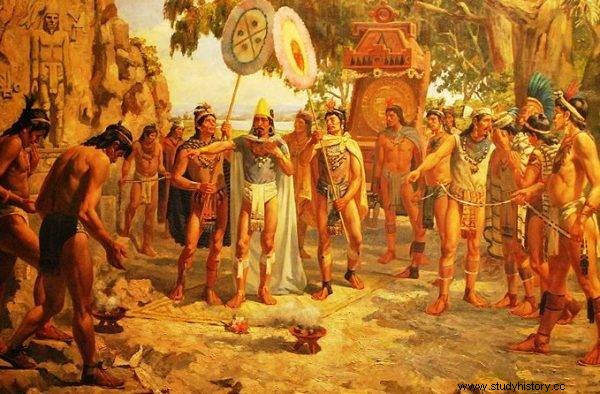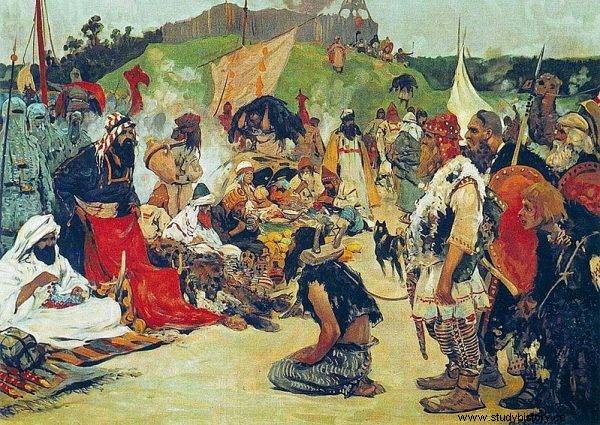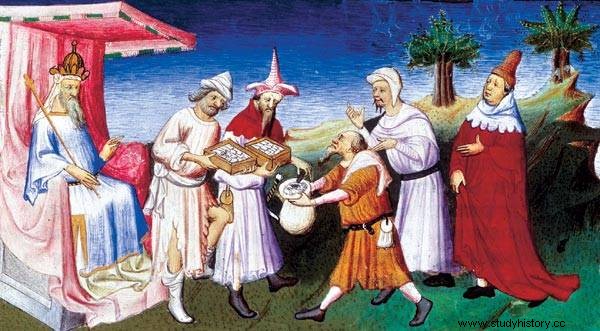The smooth flow of goods allowed for the development of civilization. Today it is obvious to us that we pay for the goods we buy with money, but in the past, traders had to resort to more creative means.
Money - as defined - is a recognized medium of economic exchange that has a specific universal value. Before zloty, dollars or even gold coins dominated the market, people exchanging goods or paying for a service had to use other solutions.
Barter exchange, i.e. direct exchange of goods for goods required prior rate determination, and besides, it was sometimes troublesome due to the indivisibility of some goods. For example, imagine a craftsman trying to buy a horse - how many tools he makes are worth as much as one animal? Who should evaluate it? And finally - how do I pay the difference in value?
Barter functioned well in closed communities where exchanges had a chance to know the real value of goods well. Convert them into work, number of meals, general utility for the buyer. However, as larger groups of people developed and the production efficiency of goods increased, there was a need to establish an easier, more standardized form of payment - and then the first forms of money, known as pay or simply commodity money, appeared.
Expensive cocoa
One of the first forms of money were cocoa seeds used by the Aztecs. At the market, fixed numbers of "currencies" were exchanged for food, weapons, utensils and jewelry. Everything happened under the watchful eye of officials, and trade could only take place in a designated place. Thus, government buildings were built near the market square, such as in the city of Tenochtitlán, where the office building dominated a very large commercial square.
Officials not only set the prices of goods, but also prosecuted and severely punished criminals who tried to break the rules (for which they even risked death!). Fraudsters meanwhile resorted to illegal means of counterfeiting money, digging some seeds and filling the inside with mud, then mixing them with the rest . Barter was not entirely forgotten, it was still possible to trade goods directly, but the price difference was easier to fill in with seeds.

One of the first forms of money were cocoa seeds used by the Aztecs (photo:Daniel del Valle / public domain)
Payment in cocoa was very practical as the seeds took up relatively little space and were light - as long as there were only a few pieces to pay, of course. Moreover, the seeds were easy to obtain as these plants were common in South Mexico.
The problems began when traders made bigger deals. The unit of measurement was around 24,000 seed bags, but as you might guess, transporting and paying with them was quite inconvenient. Therefore, during large purchases, for example slaves or sacrifices, substitutes were used:cotton coats of quachts with a value of 60 to 300 seeds.
A house, or five women and one cow
It turns out that the Aztec commodity money was, compared to some other ideas, quite practical ... and humane. In Europe, the value of objects or real estate was measured in units of cattle or slaves widely traded.
In ancient Ireland, the currency was young girls who bought houses, boats or land, and exchanged with the Vikings. They, in turn, transported this living commodity and sold it to merchants from around the Mediterranean, where it was valued for its unusual hair color.

The Vikings transported this living commodity and sold it to merchants from around the Mediterranean, where it was valued for its unusual hair color (Photo:Sergey Ivanov / Public Domain)
While the young women of the islands were the most valuable commodity in their homeland, in Africa, men were regarded as the highest denomination. Women and children were only a fraction of the value of a male slave. Human currency proved to be the most troublesome compared to the others, as it depreciated at death and tended to escape the owner.
Therefore, in various places around the world, trade was mainly based on wages:the most divisible, durable and rare. In Mesopotamia, the values in grain were calculated, in far Asia shells were often used as a currency. The money in Poland was amber But not only:Slavic traders also used the skins and heads of squirrels and martens (until today the currency in Croatia is the marten). Salt and spices were also used as a means of equalizing transactions.
Read also:Nałożnice, wojowie i castraci. Slavic slaves in Arab countries
Unmovable capital
One of the least practical money was used on the Yap Islands in Micronesia ... boulders. Some "coins" there were 3.5 meters in diameter and weighed several tons. So why were they even paid with them?
The decisive factor was the limited availability of stones, which were imported from a distance of up to 400 kilometers, from the Palau Archipelago. The calcite and aragonite pieces were the most valuable. The key to the operation of stone coins called rai was their durability and circulation in a compact island community.
Everyone knew who the boulder belonged to. When this one changed hands, you didn't even have to have him with you. Interestingly, rai they are still valuable today, and you can still get help or compensation for them on Yap. Unfortunately, the decades old stones were partially destroyed during World War II by soldiers who used them as a building material.
13th-century banknote
The founder of the Yuan dynasty, Emperor Kublai Khan who ruled at the end of the 13th century, put a lot of effort into the development of the economy. In addition to improving transit routes and rebuilding public buildings, as well as establishing a trade tax office, he revolutionized the monetary system by introducing ... paper currency!
The Mongolian administration introduced the securities as early as 1227, but it was Kublai Khan in 1260 that unified them as a single currency under the name of Jiaochao . Currency in circulation had an expiry date and a fixed value in silver and gold. The government accepted the taxes paid with their help. Kublai even went so far as to finance the Song conquest by releasing additional money onto the market, but the venture ended in economic catastrophe due to lack of fiscal discipline and inflation.

Kubilai Khan (photo:Master of Busico / public domain)
However, the idea of paper money was not abandoned - Minister Sangha created another currency as early as 1287 to fill holes in the budget.
The idea was also tested in Iran, but there the fragile money did not catch on at all, and the ruler of Gaykhat responsible for its implementation was soon murdered. Could the innovative ideas upset his subjects so much? Well, we know for sure that the "fictitious" currency has finally gained approval and is used all over the world today.
Bibliography:
- Dylewski, A., History of money in Poland . Carta Blanca, 2011.
- Kalwat, W., History goes on with money . Wolumen publishing house, 2019.
- Rothbard, M., N., Gold, banks, people. A Brief History of Money . Fijorr Publishing, 2006.
